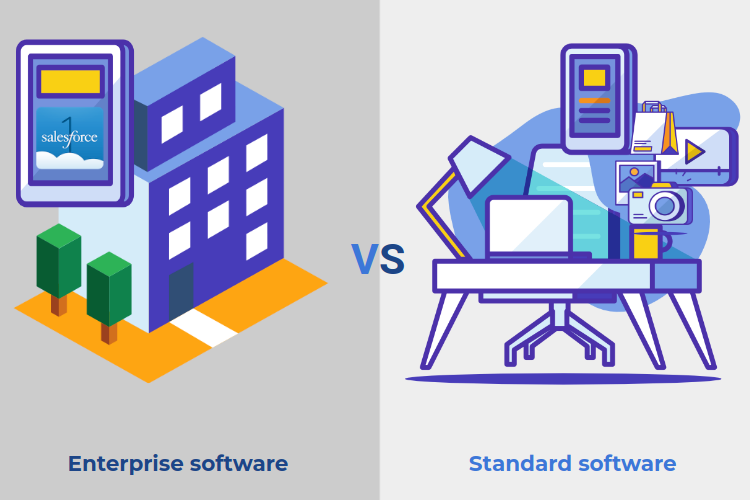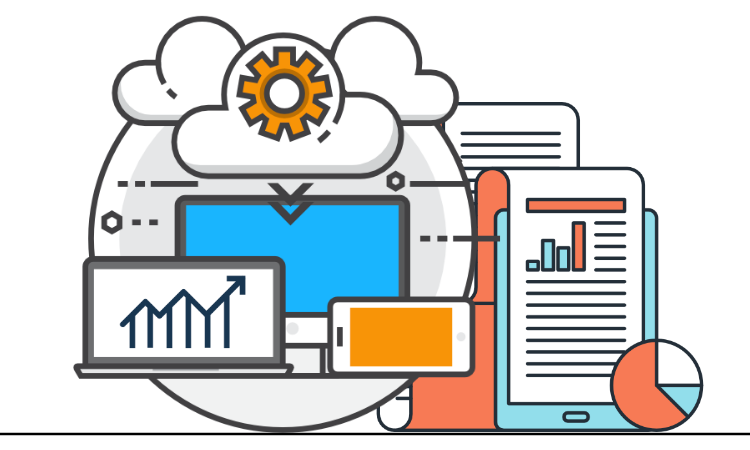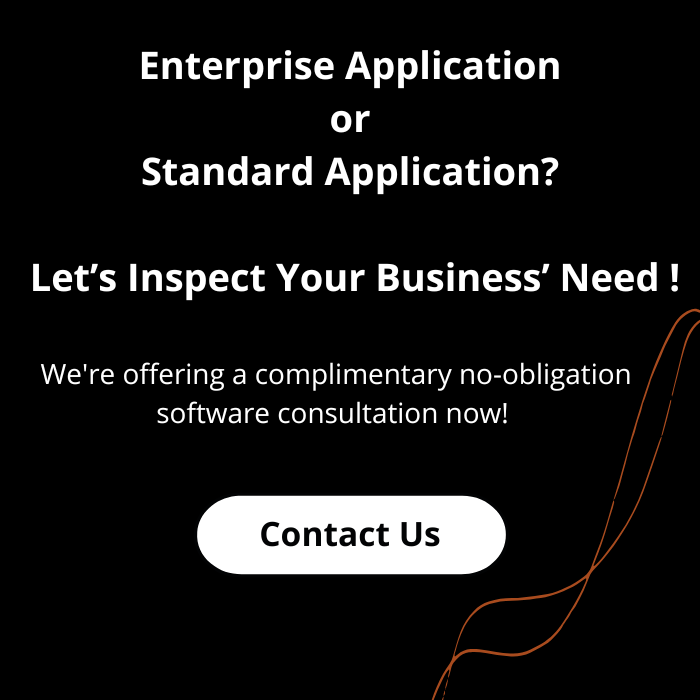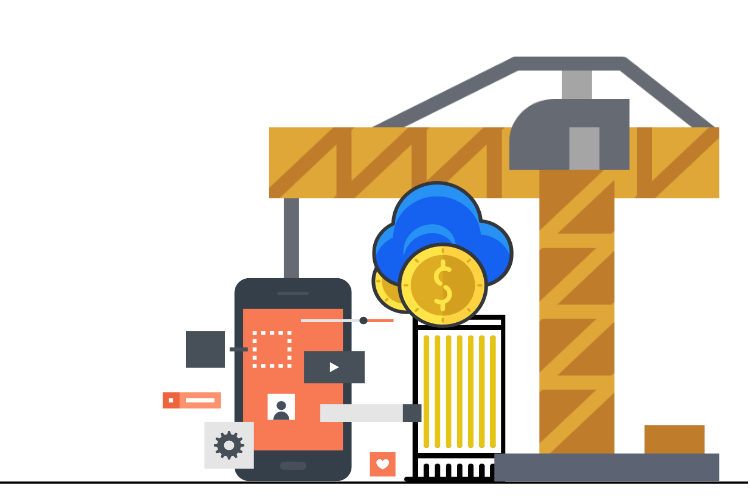It has been a decade now since when people have been talking about thousands of apps around them. As a matter of fact, there is an app for almost everything that we do in everyday life. Right from news and entertainment to fitness tracking and creating soft copies of documents – the list is never ending.
Source: Statista
According to a study by Business of Apps, 194 billion apps were downloaded in 2018 for Android and iOS, whereas another report shows that on an average, the total mobile time for the US users is 3 hours and 43 minutes per day, out of which 2 hours and 57 minutes are spent on apps. However, with the course of time, multiple categories of mobile applications have emerged based on the preferences and requirements of users, and to categorize them broadly, there are two types – standard or consumer apps and enterprise mobility app. To define briefly each of them – consumer apps refer to the gaming apps, social media apps, travel apps or music apps that are designed and developed for anyone and everyone, whereas enterprise apps are designed to satisfy the specific business needs of an organization.
The term enterprise software development has gained quite a lot of popularity over the past few years, and that proves there is something very exclusive about enterprise software. Of course, there are significant reasons why it has to be different than the consumer apps.
There are certain unique features that make an app enterprise grade, and it’s imperative to follow those parameters to yield the expected outcome. But before that, what is the reason of this hype around enterprise software? Why businesses are so interested to invest in enterprise application development?
A recent report about the global mobile app revenue shows that the total app revenues amounted to more than 365 billion U.S. dollars in 2018. And, quite interestingly, it’s expected that the apps are to generate a revenue of more than 935 billion U.S. dollars by 2023. These kind of figures surely inspire the business owners think in the direction of mobility app, and as a result of that, they are interested to invest in enterprise application development services.
Which Application Development Service Are You Looking For?
Factors That Make A Software Enterprise Friendly And How Are They Different From Standard Apps
[1] ROI
The story is quite different for the consumer apps and enterprise apps when it comes to measure the ROI. Since the target audience of these two types of apps are completely different, their process of work, too, varies to a great extent.
When it comes to measure the ROI of an enterprise app, you need to identify the objectives of the app, choose relevant KPIs that reflect the objectives perfectly. Finally, you need to calculate the returns, evaluate them and of course, improve them. On the other hand, for a consumer app, it’s important to calculate the lifetime value of the customers.
[2] Interoperability
While designing an enterprise app, it must be thought about that the ultimate intention of creating that app is to benefit the business in a way or the other. Similarly, the motif is absolutely the same for all the other applications that the enterprise currently owns. Therefore, it must be kept in mind how important it is to make one app communicate with the other and the data needs to be shared amongst them. Simply put, the new app should be able to seamlessly communicate with the existing apps, and access their capabilities and vice versa so that it can lead to improved business productivity.
[3] Scalability
This is one of the key features that an enterprise software developer has to keep in mind. Quite obviously, a business is expected to grow, and along with that grows a lot of other things including the services it offers and the number of people it caters to. Keeping this in mind, the architecture of an enterprise app should be capable enough to handle that growth, at least in the near future. In fact, according to the experts, enterprise mobility apps should be designed keeping the distant future growth possibilities in mind, whenever possible.
[4] Micro Services Rather Than Monolithic
Well, it’s sometimes way quicker to develop the monolithic apps, when compared to micro services. But picking the easy wins are not always the right approach, especially when it comes to develop an enterprise mobility app. The idea behind micro services is to split an app into a set of smaller services that can still talk to each other seamlessly (often via API). As each micro service is logically independent self sustainable modules, it's much easier to break large super complex business problem at a much granular level and then handle their complexity at each micro service module level.
Also because of this logical independence, micro services can even be deployed at individual level and it's a big enabler for CI/CD.
Also if required you can cherry pick the most suitable programming language for each of your different micro services, allowing you to build a highly optimized Enterprise Application.
[5] Flexibility To Adapt To Future Business Needs
An enterprise mobility app must be designed and developed in a direction so that it can cope up with the future business needs. Expected enough, a business is supposed to grow in terms of service offering and future services can be more demanding and even more advanced(read complex). Also very often business pivots to a slightly different model to address changing market needs. And to ensure an enterprise app doesn’t have friction with changing business needs, it’s important to keep these variables in mind right from the design phase.
Moreover, the architecture of an enterprise app should be flexible enough so that complex modules or different features can be incorporated into it, if there is that kind of a requirement in the future. Well, on the other hand, standard or consumer apps are often built with a specific purpose to cater to a target audience, and usually, they don’t need to have the flexibility to adapt to future business needs.
[6] Future Proof In Light Of Changing Technology
Currently, we all are living in a global village, as it’s known to all, and things are going to get better. A study done by the Council for Research Excellence shows that in the United States, an adult spends approximately 8.5 hours a day looking at screens, on an average. This is of course due to the constantly improving technological innovations.
While choosing the technology and the platform for an enterprise app, it’s important to consider its lifespan. Choosing a technology that is future-proof for at least a couple of years ensures that your app doesn’t get obsolete as soon as there is a new technology, and you don’t lose the competitive edge. Hence, be sure to choose platforms and technology that are advanced enough so that those remain relevant for a significant time span.
[7] Reuse Of Existing Modules
This is quite an obvious factor when it comes to enterprise software development. A business might require to design and develop different mobile applications at different points of time, and it doesn’t necessarily mean that any two apps would be starkly different from each other.
Quite often, there are functionalities of two or multiple apps that overlap, and in a scenario like this, the flexibility to reuse the existing modules is a huge plus. Not only because it saves you a lot of time that could have been wasted in case the app had to be designed from scratch, but also reduce the chance of going wrong while you are using the tested and hardened modules.
[8] Development Cost
Considering the different scope of work of enterprise apps and consumer apps, it’s kind of obvious to expect that the development cost for the two would be hugely different. Despite the smaller target audience, enterprise mobility apps are more expensive than the consumer apps and biggest reason is lot more planning and testing are baked into them, simply because, if they go wrong millions and millions of dollars are at stake as well as it may destroy an established company’s hard earned reputation.
Try Our Free App Cost Calculator
Read more: 5 proven ways to reduce software development costs
Why Does Application Development With BinaryFolks Make For a Wise Choice?
Driven by ex-engineers from Google, Amazon & Salesforce
101% Value For Money (+1 for Our Complimentary Consultation before You Spend Your 1st Dollar!)
Reviews That You Can Verify!
Safeguarded Business With An NDA
Out-Of-The-Box Innovations
Eye For Details
Questions Galore (Until Your Requirement & Our Understanding are mirror copies!)
Insight-Rich Scope Enhancement
Intense Domain Expertise
Close-knit feedback loop
Parting Words :
There are a lot of differences between consumer apps and enterprise apps, to a degree that they far outweigh the similarities. Those differences exist in different terms like the process of development, the way they function and also, the intention behind the model.
One of the key concepts of enterprise software development is to design a software that aims at the long-term goals of the end users. This means the engineers designing it need to be aware of how the software is going to be used, upgraded and maintained as the businesses grow. This is why organizations that are in search of some robust enterprise mobility apps, which are also designed following the best practices of the industry, should get in touch with the right enterprise software development company.
With several years of hands-on experience in enterprise mobility app development, BinaryFolks is well placed to develop your enterprise apps, which will not only deliver you a huge competitive advantage in your niche but simultaneously make sure your hard earned market reputation is never at stake.
FAQs
For more information read: Enterprise Software Development
- 1.Enterprise Resource Planning Systems
- 2.Customer Relationship Management Systems
- 3.Supply Chain Management Systems
- 4.Knowledge Management Systems
- 1.Saves time spent on manual operations
- 2.Improves the internal collaboration of a business
- 3.Allows optimal decision making
- 4.Helps businesses to promptly adapt to the new industry trends
Whereas ERP can be considered a specific service that is a part of enterprise application services, it allows businesses to automate some of its core processes including – inventory management, accounting, customer acquisition, HR tasks, etc.



.png)



